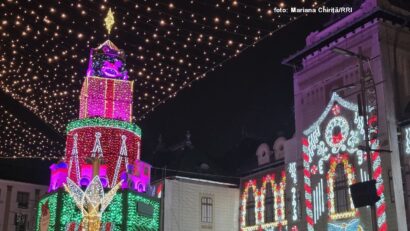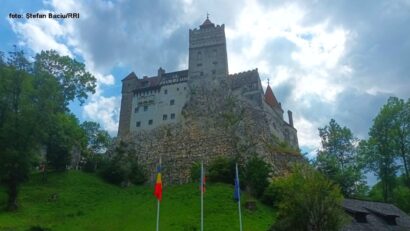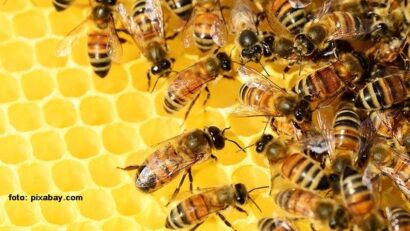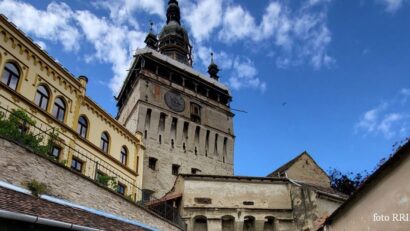Rural Tourism in Bukovina
Located in northern Romania, Bukovina is famous for its outstanding traditions and customs passed down from generation to generation, as well as for its beautifully painted monasteries
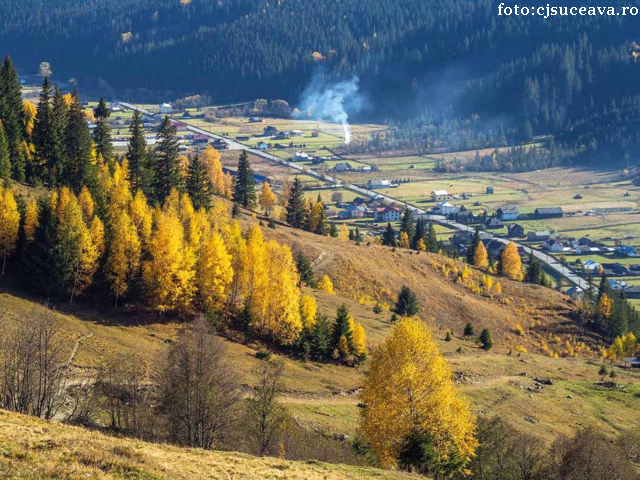
Daniel Onea, 19.06.2019, 15:24
The region is also a travel destination very popular with those interested in active tourism. In todays edition we invite you to rediscover this region as a summer destination and for this reason our first stop is going to be in Marginea to visit an ethnographic museum on the premises of a 100-year-old house. However, its not the age of the building, which is impressing, but the traditional costumes, textiles, necklaces and ceramics on display in this museum.
Visitors here have the chance to admire various artifacts and even see these artisans at work. Corneliu Magopat is a potter who started learning this craft from his parents when he was 7.
Corneliu Magopat: “We stand out among pottery centers because the colours we use here are special. These colours are natural free of oxides or other artificial ingredients and this makes us unique in Romania and Europe. This is the first tourist attraction here, then there is the environment as we are located in a region of breath-taking beauty. Tourists can visit our exhibitions and even buy some of the artifacts that we produce. They can have a look at our workshops and we can assist those who are curious to try their hand at pottery. Tourists feel great here.
New and diversified travel packages have been added every year to the already rich offer promoting rural tourism in Bukovina. In essence, agritourism and wellness tourism in the countryside is all about a comeback to nature, organic food and a healthy lifestyle.
Besides, it brings one closer to the Romanian village and its values. And if traditional artisans in Bukovina are famous worldwide for the artifacts they make by means of centuries-old techniques passed down from generation to generation, the regions churches and monasteries take pride of place for their history and interesting aspect. Catalina Velniciuc higher advisor with the Centre for Travel Information and Promotion in Suceava has more on these monuments.
Catalina Velniciuc: “This is the first question tourists who are visiting this information center usually ask; ‘where are the painted monasteries, which have been mostly included in the UNESCO heritage list? These are the monasteries of Arbore, Patrauti, Probota, St. John the New in Suceava, Voronet, the Humor Monastery, Sucevita and Moldovita. So, we have eight UNESCO monasteries and all of them are extremely beautiful. All were built around the second half of the 15th century and the beginning of the 16th century. They are different from one another through their indoor and outdoor paintings presenting various Biblical scenes.
Although less visited than the famous Voronet, Putna or Moldovita, Probota is a must-see in Bukovina. One of the nuns here gives us a presentation of this 500-year old church.
Nun: “Probota is the first painted church. It was erected around 1530 and was painted by a team of monks between 1530 and 1532. From an architectural point of view it observes the pattern of big medieval necropolis combining three styles, the gothic one, which is predominant, the renaissance and local style. In the 19th century, the church suffered a series of changes under the Greek administration. Exterior walls were being repainted, the windows of the narthex and the porch were refurbished and the interior walls were also repainted. Since 1864, after monasteries had been secularized, until the 1989 anti-communist revolution, it functioned as the church of the Probota village. It became a nun monastery after 1989 and in 1993 was included on the UNESCO heritage list for its architecture. Upon the restoration works, held under the UNESCO auspices, and mainly funded by the Romanian and Japanese governments, the churchs interior walls were washed to reveal the original paintings of 1532, which actually constituted a unique, exceptional iconographic programme, which prompted experts to declare it the best-preserved and most accurate church from a theological point of view. The church thoroughly complies with the liturgical standards and the artistic style of a Byzantine church and that brought it a UNESCO award for the value of its interior paintings in 2001. And if the outdoor paintings are no longer what they used to be because of the refurbishment works, its interior paintings remain unique.
Those interested in spending an active and special holiday need to set out for the Dorna Land. Monica David, communication expert with the Tara Dornelor Association for Ecotourism has recently announced the region is about to become Romanias fifth ecotourism destination and the first of its kind in Bukovina. The aforementioned tourist association has issued ten travel packages including various outdoor activities such as mountain hiking, bicycle rides, easy rafting, skiing and horse riding.
Monica David: “Tourists coming mainly from Poland, the Czech Republic, France and Germany have mostly opted for guided tours provided by the Visiting Centre of the Calimani National Park. The centre has managed to bring to the attention of our tourists the regions culture and nature. The centre hosts various exhibitions aimed at presenting the Calimani outcrop, Romanias youngest and highest volcanic mountain. There are also bird watching trips and film screenings as well as sessions featuring the parks wildlife and flora.
As one can see, the region offers a series of varied and complex travel packages at affordable prices. For more information we invite you to access ‘taradornelor.ro.

